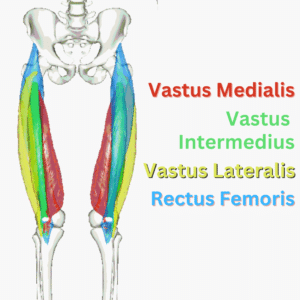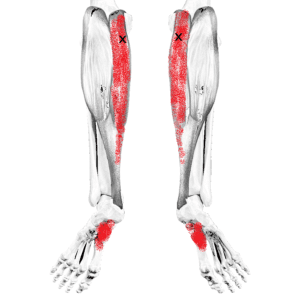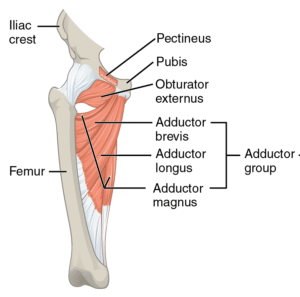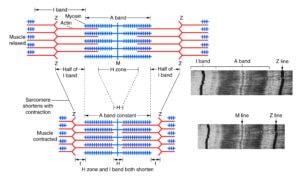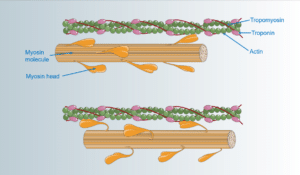If you have knee arthritis, there's one thing that you must do before considering a knee replacement:
Make sure that your arthritis is the REAL cause of your knee pain.
That may sound obvious, but around 20% of people continue to have pain a year after knee replacement.
Many of those people may not have been ideal surgical candidates in the first place.
There are many different sources of knee pain... even if you have knee arthritis.
One common cause of knee pain is from muscle knots or trigger points.
Before you consider having a knee replacement, it's crucial to make sure that your muscles aren't the cause of your pain.
Because if your muscles are the source of your pain, replacing the arthritic joint won't help.
Furthermore, by treating the muscle knots, you may be able to avoid a knee replacement!
Watch this video to learn some common muscle causes of knee pain, tips that you can use to relieve them.
Table of Contents
- Muscle Knots as a Cause of Knee Pain (Even if You Have Arthritis)
- What Are Muscle Knots (Trigger Points)?
- How To Release Muscle Knots Causing Knee Pain
- Foam Roller For Muscle Knots
- Massage Stick For Muscle Knots
- Gua Sha For Muscle Knots
- Massage Gun For Muscle Knots
- Manual Trigger Point Therapy for Knee Arthritis
- Trigger Point Dry Needling for Knee Arthritis
- After Trigger Point Release
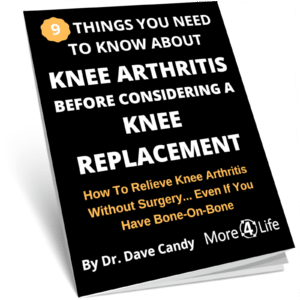
Muscle Knots as a Cause of Knee Pain
(Even if You Have Arthritis)
There are four main muscle groups that can cause knee pain:
- Quadriceps
- Hamstrings
- Calves
- Hip Adductors
Quadriceps
The most common one is your quadriceps.
It's a four-headed muscle group. (quad = four, -ceps = heads)
The function of the quadriceps is to extend your knee.
Your quads often works along with your glutes, to help you with tasks such as going up stairs or standing up from a chair.
If your glutes are weak, it can often cause your quads to become overworked and develop trigger points.
Hamstrings
The second group is your hamstrings on the back of your thigh.
Your hamstrings are your main knee flexors. They also function to extend your hips.
Calves
Additionally, your calf muscles can cause pain in the back of your knee as well.
So the hamstrings and the calves can both refer pain to the back of the knee.
Hip Adductors
The final muscle group is your adductor muscles on the inside of your thigh.
The adductor muscles bring your knee towards midline. Y
ou can develop trigger points, or muscle knots, in your adductors from sitting with your legs crossed for long periods of time.
What Are Muscle Knots (Trigger Points)?
Before covering how to relieve knots or trigger points, it's helpful to understand just what knots or trigger points are.
They're essentially hyper-irritable points in muscles that are, by definition, four times more tender than normal muscle.
Muscle fibers contain overlapping filaments. These contractile units are known as sarcomeres. Sarcomeres expand when you stretch a muscle and shorten or contract when you contract a muscle.
There are overlapping filaments, actin and myosin, ratchet the muscle together when you contract your muscles.
It actually takes energy to release the bond between those myosin heads and actin fibers.
When you develop trigger points, it cuts off the local circulation in the capillaries.
Because your muscles aren't getting the circulation and oxygen to produce energy, the myosin heads say bound to actin.
This creates a local energy crisis where your muscles can't get out of that situation.
Therefore, even if you're stretching, those muscle knots won't release.
Below, I'll give some tips that you can use to help release muscle knots.
How To Release Muscle Knots Causing Knee Pain
The tips below go from general to specific.
General tips are good to cover a large portion of muscle in a short period of time.
However, they're not quite as effective or long-lasting as the more specific treatments.
So I'll show you various options to release muscle knots, going from general to specific.
Foam Roller For Muscle Knots
Solution number one is using a foam roller.
ProsourceFit High Density Foam Rollers 3...
14% OffThis is a pretty common thing that people do for knots in their legs, but there are a couple of drawbacks.
Mostly, these are good for larger groups such as your quadriceps or hamstrings.
They're not great for using on your calves.
Additionally, they can be a bit painful.
Furthermore, some people have trouble getting on and off the floor.
For that reason, the foam roller is a good solution but it's not one for everyone.
Massage Stick For Muscle Knots
The second option would be to use a massage stick or a muscle roller stick.
Idson Muscle Roller Stick for Athletes- ...
$9.15 (as of July 26, 2024 17:22 GMT -05:00 - More infoProduct prices and availability are accurate as of the date/time indicated and are subject to change. Any price and availability information displayed on [relevant Amazon Site(s), as applicable] at the time of purchase will apply to the purchase of this product.)You can use this on your quadriceps, calves, hamstrings, or inner thigh muscles.
If you find an area that's especially sensitive or tender, you can focus in on that area a little bit more.
Massage sticks are a little more specific than a foam roller, but you can still hit the whole muscle and cover a fairly large surface in a short period of time.
Gua Sha For Muscle Knots
The next option is to use instrument-assisted soft tissue mobilization.
That's using a tool to help mobilize your soft tissues or your muscles.
You may have heard of various brand names like Graston or Astym, and those are the most common ones used clinically in physical therapy clinics.
However, Gua Sha tools have been used since ancient China
You can buy Gua Sha tools fairly inexpensively to use them at home.
Hana Emi Gua Sha Facial Tools (Set of 4)...
13% OffYou can use them on any muscle group, such as your quadriceps, your hamstrings, your adductors, or your calves.
You basically just run them up and down the muscle parallel to the direction of the muscle fibers.
You want to have the tool at about a 30 to 45 degree angle to your muscles.
You should feel little knots as you run the tool up and down your muscle.
If you happen to feel a knot, you can focus in a little bit more on that knotted or tender area.
Using a lubricant such as cocoa butter does help the tool to slide a little bit more easily on the skin.
Massage Gun For Muscle Knots
Massage guns are another great option to relieve knee pain from muscle knots.
The one in the video is the X6 Pro Massage Gun from Bob and Brad. (10% OFF Discount Code: JAH3HED8)
I like this one because of the metal head which offers deeper penetration into larger muscle groups like the quadriceps and hamstrings.
BOB AND BRAD X6 Pro Massage Gun Deep Tis...
$139.99 (as of July 26, 2024 07:51 GMT -05:00 - More infoProduct prices and availability are accurate as of the date/time indicated and are subject to change. Any price and availability information displayed on [relevant Amazon Site(s), as applicable] at the time of purchase will apply to the purchase of this product.)A massage gun allows you to cover a large treatment area in a short period of time.
You can also use a trigger point attachment to localize into a single trigger point. Hold it over the knotted or tender area for about 30-60 seconds.
Manual Trigger Point Therapy for Knee Arthritis
If you want to get a little more specific yet, that's where you're going to start doing manual trigger point therapy using your hands.
You can do this at home or see a massage therapist or a physical therapist who does manual physical therapy.
To do this, run your fingers along the muscles until you find a knot or trigger point.
This way, you're getting two-way feedback:
You feel the tender area in your thigh, but you can also feel through your fingers as to when you feel a knot.
You want to try to localize in on the most knotted, most tender area.
You'll find kind of a general area that feels sore or stiff. You can probably feel a ridge or a knot in the muscle.
Then roll back and forth over that ridge or knot until you find the epicenter of the knot or the trigger point.
Once you find that, you want to hold pressure on it for 1.5-3 minutes.
Holding gentle pressure on that trigger point may feel a little bit tender at first, but over time you should feel the tension in that trigger point slowly melt away.
Trigger Point Dry Needling for Knee Arthritis
If you want to get a little bit more specific yet, you can go to a physical therapist who does dry needling.
This will be even a little more specific because you're not only getting over the top of the trigger point, but you're actually putting a little acupuncture needle inside the trigger point.
This is NOT a treatment that you would do on your own at home. You would have to go see someone to do this.
A randomized controlled trial consisting of 40 women with mild to moderate knee arthritis showed that with three sessions of dry needling, the group who received dry needling had greater improvements in pain, walking speed, and balance versus the group who did not receive dry needling.
It is a very effective treatment option, and one that we offer here at More 4 Life if you're in St. Louis.
After Trigger Point Release
Dry needling isn't a stand-alone treatment for muscle knots though. It should be used along with exercise and other manual therapies in order to have maximum effectiveness.
Additionally, it's important to figure out what caused the trigger points to come on in the first place. Otherwise, they're likely to come back in the future.
Need Help For Knee Pain?
If you live in St. Louis and need help for knee pain - whether from arthritis, trigger points, or a combination of both - we'd be happy to help you.
Tap the button below to request an appointment with one of our specialist physical therapists.



